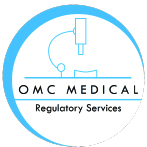Turkey-TITCK (Türkiye İlaçveTıbbiCihazKurumu)- Approval Processes for New Drug
Turkey-TITCK (Türkiye İlaçveTıbbiCihazKurumu)- Approval Processes for New Drug
Regulatory Authority
Turkish Medicines and Medical Devices Agency (TMMDA)
Link for Regulatory Authority
https://www.titck.gov.tr/iletisim
Local Authorized
Yes
Classification
Novelty, Therapeutic Category, and Risk.
Registration Timeline
30 to 60 months
Registration Fee
- Full MMA: TRY 100,000 – TRY 500,000 (approx. USD 5,000 – USD 25,000)
- Conditional MMA: TRY 50,000 – TRY 250,000 (approx. USD 2,500 – USD 12,500)
- Import Permit for Clinical Trials: TRY 10,000 – TRY 50,000 (approx. USD 500 – USD 2,500)
License Validity
5 Years
- Application Form
A completed application form is typically required, providing detailed information about the drug, its formulation, and its intended use.
- Product Information
Comprehensive information about the drug, including its composition, manufacturing process, stability data, and specifications.
- Quality Documents
Documents related to the quality of the drug, such as a detailed description of the manufacturing process, specifications for raw materials and finished products, and certificates of analysis.
- Nonclinical Study Data
Nonclinical data, including pharmacology and toxicology studies, to assess the safety and efficacy of the drug.
- Clinical Study Data
Clinical trial data demonstrating the safety and efficacy of the drug in humans. This includes results from Phase I, II, and III clinical trials.
- Dossier in Common Technical Document (CTD) Format
The submission of a dossier in the CTD format, which is a standardized format for organizing and presenting information in regulatory submissions.
- Good Manufacturing Practice (GMP) Certificate
A GMP certificate ensuring that the drug is manufactured in accordance with good manufacturing practices.
- Certificate of Pharmaceutical Product (CPP)
A certificate issued by the regulatory authority in the country of origin, indicating that the drug is approved for sale in that country.
- Pharmacovigilance Plan
A pharmacovigilance plan outlining how the safety of the drug will be monitored and managed post-approval.
- Stability Studies
Data from stability studies demonstrating the drug’s stability under various conditions over time.
- Labelling and Packaging Information
Comprehensive information on labelling, including package inserts, and details on the packaging of the drug.
Licensed Drugs Unit
- Integration of Relevant Articles
Avoid presenting relevant articles merely as appendices in response applications.
Select the relevant letter from the Electronic Document Management System (EBYS) and add it as an electronic document.
- Naming of Application Annexes
Application annexes should not be generically named as “Annex-1.”
Instead, use descriptive names such as “Copy of the License” or similar terms.
- Tracking Numbers in Cover Letters
When making applications regarding interests, refrain from using tracking numbers or system-generated numbers from the company’s document management system. Use the numbers generated by EBYS.
- Submission of Documents in Response
Ensure that documents submitted in response to institution notifications are sent to the relevant unit where the notification was made.
- License Renewal Considerations
Licensed drugs without PBRER approval from the Pharmacovigilance Risk Management Unit should not apply for license renewal.
- GMP Documents in License Renewal
In license renewal applications, provide detailed information on domestic production activities and submit up to date GMP documents, including overseas GMP audits and certification processes.
- Inclusion of Contracts
If submitting any contracts, include the parties to the contract in the application annex.
Provide registry certificates showing the officials of the companies.
- Verification of Document Types
Double-check that the correct document types are selected when making applications to the institution.
- Proper Use of Document Types
For applications with missing documents, use document types such as “Incomplete Document Application (Does not require physical documents)” or “Incomplete Document Application (Requiring physical documents).”
Avoid using the “Transition to Implementation and Commitments” application type for incomplete documents.
- Submission of Comparative SPC/KT
Include comparative and collared SPC/KT in stock SPC/KT usage requests.
- Approval of KT in Sales Permit Applications
Ensure that the KT submitted in sales permit applications is approved by the institution. – Present KT in the required design/format.
- Electronic Application for Original License/Certificate
For applications requiring an original license/certificate, apply electronically and attach a copy of the license/certificate.
- Nitrosamine Impurities Announcement
In line with the Nitrosamine Impurities Information Announcement dated 02.09.2022, submit applications to the “Licensing Unit” for ongoing licensing processes of human medicinal products under the “Licensed Medicines Technological Evaluation Unit.”
Quick Contact
If you have any questions or need help, feel free to contact with our team.
©2024 OMC Medical, All Rights Reserved. With Love by 7oroof.com

Our team will be happy to respond your queries. Contact us directly with your questions or for scheduling FREE consultation and we’ll be in touch as soon as possible.
Quick Contact
If you have any questions or need help, feel free to contact with our team.

Our team will be happy to respond your queries. Contact us directly with your questions or for scheduling FREE consultation and we’ll be in touch as soon as possible.
Quick contact
- info@omcmedical.co.uk
-
0044 7719761764
0044 2080667260 - Planet House, North Heath Lane, Horsham, West Sussex RH12 5QE

Our team will be happy to respond your queries. Contact us directly with your questions or for scheduling FREE consultation and we’ll be in touch as soon as possible.
Our Branches
- Switzerland
- Europe (Northern Ireland)
- Asia
- Canada
- Brazil
- Middle East
- China
- Turkey (Partner Office)

To launch a medical device in a country, medical devices must comply with the local country’s regulatory requirements. Let us be your trusted partner in bringing your medical devices to the Global market. Contact us today to learn more about how we can assist you in every step of the way.
Our Branches
- Europe
- Asia
- Africa
- Oceania
- South America
- North America
- Planet House, North Heath Lane, Horsham, West Sussex RH12 5QE
- Planet House, North Heath Lane, Horsham, West Sussex RH12 5QE


